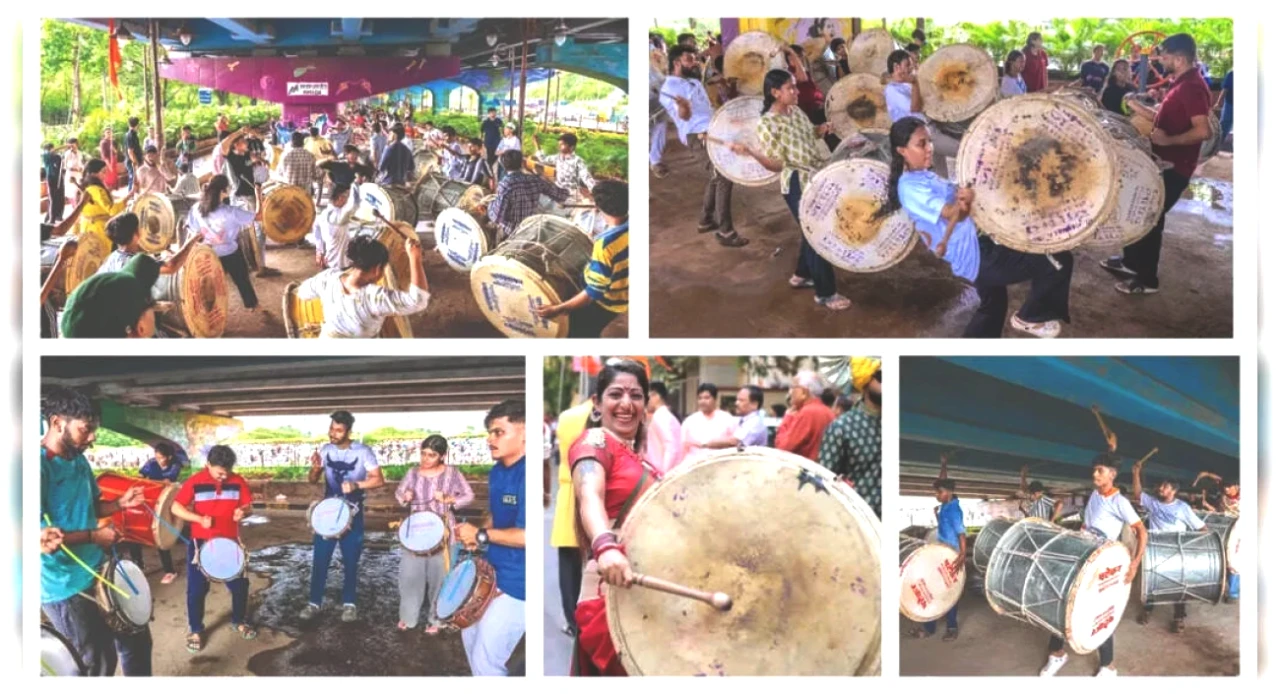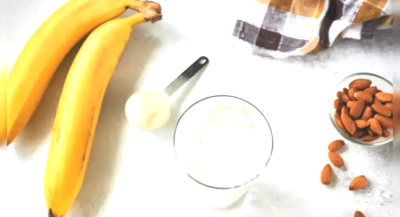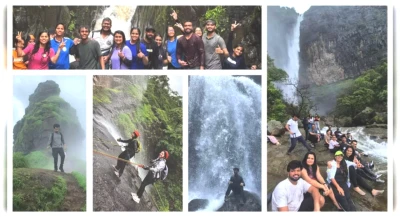Get Ready for Ganeshotsav: Dhol-Tasha Beats Kick Off Celebration Preparations!
As Mumbai's dhol-tasha ensembles prepare for the Ganpati festival, their powerful rhythms resonate throughout the city. Comprising enthusiastic young drummers from various walks of life, these groups harmonize their passion for traditional music with the hustle of everyday routines. Musicians experience tranquility and relief through their performance, bonded by a shared commitment to culture and community, with proceeds benefiting charitable causes.

As Mumbai readies itself for the eagerly anticipated 10-day Ganpati festival, the vibrant sound of the dhol-tasha—the very essence of the celebration—has already started resonating throughout the city, beneath flyovers and along peaceful streets. Dhol-tasha pathaks, which form a crucial component of Maharashtra’s cultural fabric, are diligently perfecting their art in preparation for Ganeshotsav.
‘We have been expanding steadily over the years’
Neelesh Vijay Bharankar, the founder of the Gajashree Dhol Tasha Pathak located in Tilak Nagar, reminisces about their modest origins. “We began with a small group of 20-25 individuals roughly ten years ago, and today our numbers have grown to 125, including a significant number of young girls and women. Our journey has seen consistent growth,” he shares. Rajesh Mail, who co-manages the Navshree Dhol Tasha Pathak alongside Manish Ghadshi, adds, “We boast 70-80 active members who regularly participate in practice sessions. Our travels now extend to Ratnagiri, Belapur, and all across Mumbai for Ganeshotsav as well as various cultural celebrations.”
‘Our team is predominantly youthful and driven by enthusiasm’
These ensembles primarily consist of young drummers juggling their studies and jobs. “There’s no rigid age restriction. Anyone old enough to handle a dhol is welcome to join (smiles). While we do have members in their 30s, many of them are caught up with work and often miss out on certain events,” explains Rajesh. Rajat Umesh from the Samrajya Dhol Tasha Dwaj Pathak adds, “Our participants are generally between the ages of 15 and 30. The dhol is quite heavy, and the vigorous drumming can lead to sore hands, but their commitment drives them forward.”
‘Amidst those thunderous dhol beats, I discover tranquility’
For Aadityaa Santosh Juvale, an IT professional, weekends are dedicated to practice. “Saturdays are reserved for instrument upkeep. On Sunday mornings, we gather beneath the flyover by 8 am for our sessions. Our lead and sub-lead players teach us taals and rhythms in groups. Each session lasts 2 to 2.5 hours, followed by a lunch break, and then we continue for another couple of hours. By the time we return the dhols and reach our homes, it’s already evening. We do this out of love. Amidst the thunderous dhol beats, I find immense solace. Uss awaz ke beech humein shaanti milti hai.” Rajesh, a player for seven years, echoes this sentiment, saying, “All our worries vanish when we perform.”
‘I am the only Catholic in the entire ensemble!’
Beatrz Dalgado, who has been playing the dhol for ten years, shares her story: “I was inspired when I saw a petite girl skillfully playing a large dhol. I convinced my mother to allow me to learn. Like all newcomers, I started with the dhwaj (flag) and gradually acquired new skills. I’m the only Catholic in the ensemble! I’ve received overwhelming support and encouragement here. My mother was thrilled when I joined a group that I genuinely wanted to be a part of.”
‘For us, it’s never about the money’
Throughout all the pathaks, a shared sentiment is that the music is fueled by passion rather than profit. “We were a trio of dhol enthusiasts: Prathmesh Pratap Mahadik, Diksha Sharad Yadav, and I, and it was Diksha’s aspiration to establish a pathak. After her untimely passing, Prathmesh and I made it a reality in her honor last November. We perform at festivals without receiving any remuneration,” shares a member from their group. “All expenses—ranging from travel and meals to uniforms—are covered by the pathak. Any funds we raise are channeled to charitable causes. It’s about serving the community, not about monetary gain,” he adds. Rajat concurs, “Our primary motivation lies in our love for our culture as well as traditional music.”
‘Practice venues function as community hubs’
Gauri, who has been part of the group for two years, explains, “Individuals from diverse backgrounds, ages, and perspectives come together here. We play, share laughter, argue, and grow together. Our practice locations are like community centers, and the atmosphere is simply beautiful.” Aniket Korde from a Chembur-based pathak reflects on his childhood aspirations, “Diversity in backgrounds within the group is what makes this experience unique. As a child, I would listen to dhol-tasha during festivals and attempt to replicate the beats on stools. Eventually, I joined a group. It has been a long-held dream, and now I’ve had the pleasure of meeting many like-minded individuals.”





